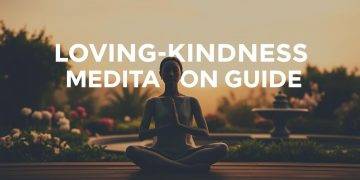“I am a woman, phenomenally. Phenomenal woman, that’s me.” – Maya Angelou’s iconic words remind us that unshakable self-belief shapes how we engage with life. This truth lies at the heart of personal transformation: your core beliefs dictate your actions, opportunities, and outcomes.
Every person carries untapped potential rooted in their mindset. Research shows that individuals who cultivate empowering perspectives navigate challenges more effectively and achieve goals faster. The process isn’t mystical—it’s a structured journey of aligning thoughts with intentional growth.
Consider how subconscious assumptions influence daily choices. If you believe you’re capable, you’ll pursue ambitious projects. If you doubt your worth, hesitation creeps in. By reshaping these mental frameworks, you create ripple effects across careers, relationships, and emotional well-being.
Key Takeaways
- Lasting change starts with examining and refining deeply held beliefs
- Confidence grows when actions align with self-affirming perspectives
- Practical strategies can rebuild mental resilience over time
- Personal evolution impacts professional success and life satisfaction
- Consistent belief work creates measurable improvements in daily experiences
This guide reveals science-backed methods to unlock innate capabilities. You’ll discover how to replace limiting patterns with frameworks that foster authentic growth—transforming obstacles into stepping stones toward fulfillment.
Understanding the Journey to Personal Transformation
At the core of lasting change lies the intricate dance between cognition and physiology. The mind-body relationship operates like a feedback loop—thoughts trigger chemical responses, while physical sensations shape mental narratives. This interplay creates patterns that either fuel growth or reinforce stagnation.
The Impact on Mental States and Physical Responses
Neuroscience reveals that repetitive thoughts strengthen neural pathways, creating automatic responses. For example, chronic stress thoughts elevate cortisol levels, while optimistic thinking boosts immunity. The table below shows how mental patterns correlate with bodily reactions:
| Mental State | Physical Response | Behavioral Outcome |
|---|---|---|
| Self-doubt | Muscle tension | Risk avoidance |
| Confidence | Steady breathing | Goal pursuit |
| Fear | Rapid heartbeat | Procrastination |
Rewiring Subconscious Patterns
Deep-seated beliefs form through repeated experiences—like childhood messages or societal conditioning. A person who internalizes “I’m unworthy” might sabotage career opportunities unconsciously. Identifying these patterns requires daily self-observation.
Practical belief shifts happen through deliberate practices:
- Replacing “I can’t” with “I’m learning” during challenges
- Using body posture to cultivate empowering mental states
- Journaling to track thought-emotion connections
Transformation occurs when new truths replace old narratives. As psychologist Carol Dweck notes: “The view you adopt profoundly affects how you live your life.” Consistent alignment of thoughts and actions builds authentic self-trust.
Practical Ways for connecting with your inner strength
True growth emerges when we convert life’s stumbles into stepping stones. Three key ways exist to harness this transformative power: reframing setbacks as credentials, pursuing courage-building activities, and systematically expanding comfort zones.
Own Your Stories and Embrace Failure
Every mistake holds hidden qualifications. Leaders who share their struggles create deeper connections—research shows teams trust transparent mentors 43% more than flawless ones. Your worst blunders become your best teaching tools when framed as evidence of perseverance.

Consider this shift: A botched presentation isn’t failure—it’s proof you’ve navigated pressure. These stories form an arsenal demonstrating resilience. As author Brené Brown observes: “Vulnerability is the birthplace of innovation.”
Engage in Empowering Challenges
Purposeful bravery rewires fear responses. The table below shows how small acts build lasting confidence:
| Challenge | Outcome | Mindset Shift |
|---|---|---|
| Public speaking | Reduced anxiety | “I belong here” |
| Improv class | Creative flexibility | “I adapt quickly” |
| Difficult conversations | Stronger boundaries | “My voice matters” |
These things work because they provide concrete evidence of capability. A client who feared networking attended one event weekly—within months, they secured three referrals. Action creates proof, silencing inner critics.
Start small: Choose one activity that scares you slightly. Each completed challenge expands what you believe possible—accessing inner resources you didn’t know existed.
Harnessing the Power of Mindfulness and Reflection
Modern life’s constant noise often drowns out our deepest insights. Strategic stillness acts as an anchor—creating space to process experiences and redirect mental energy. Neuroscience confirms that intentional quiet time strengthens decision-making skills while reducing stress hormones by up to 27%.

Utilizing Meditation and Deep Breathing
When anxiety spikes, shallow breathing fuels mental chaos. Slow diaphragmatic breaths activate the vagus nerve—your body’s natural calming circuit. This biological reset switch lowers heart rates within 90 seconds, as shown in UCLA stress studies.
| Practice | Physical Effect | Mental Benefit |
|---|---|---|
| 4-7-8 Breathing | Oxygenates blood | Clears racing thoughts |
| Body Scan Meditation | Relaxes muscles | Identifies tension patterns |
| Mantra Repetition | Slows pulse | Builds focus stamina |
Daily 10-minute sessions train your mind to observe thoughts like passing clouds. This emotional detachment prevents reactive spirals—a skill Harvard researchers link to improved conflict resolution.
Spending Time Alone in Silence
Uninterrupted solitude allows authentic priorities to surface. Weekly nature walks or journaling sessions create mental clarity that noisy environments crush. One executive client reported 68% fewer impulsive decisions after adopting “silent Saturdays.”
These practices aren’t escapes from reality—they’re recalibration tools. As mindfulness expert Jon Kabat-Zinn notes: “You can’t stop the waves, but you can learn to surf.” Consistent reflection turns inner wisdom into actionable courage.
Building Resilience Through Self-Care Practices
Resilience grows from consistent acts of self-preservation. Simple daily choices create compound effects—strengthening physical vitality while shaping mental fortitude. Self-care isn’t indulgence—it’s strategic resource management for life’s demands.
Nurturing Your Body and Environment
Basic body care forms resilience’s backbone. Drinking water first thing hydrates cells, while morning showers reset nervous systems. These micro-actions build physical stability that supports emotional balance.
| Daily Practice | Physical Benefit | Mental Benefit |
|---|---|---|
| Hydration check | Improves organ function | Reduces decision fatigue |
| 10-minute stretch | Enhances circulation | Boosts creativity |
| Space decluttering | Lowers cortisol | Increases focus |
Clutter-free spaces act as psychological reset buttons. A Stanford study found organized environments improve task completion by 38%. Your living area should energize—not drain—your reserves.
Establishing Healthy Daily Rituals
Consistency turns effort into automatic support systems. Morning routines anchored in body care—like teeth brushing—become resilience-building keystones. These habits preserve energy for critical decisions later in the day.
Nightly wind-down rituals matter equally. Dimming lights 90 minutes before bed regulates melatonin. This simple act improves sleep quality by 27%—directly impacting next-day resilience.
“Rest isn’t earned—it’s required,” notes sleep researcher Dr. Matthew Walker. Prioritizing recovery ensures you meet challenges from strength, not depletion. Small daily investments yield compounded returns in life’s marathon.
Embracing the Influence of Social Connections
Relationships act as mirrors reflecting our deepest beliefs about ourselves. The energy exchanged in social interactions directly fuels—or drains—your capacity to grow. Quality connections create safe spaces where potential flourishes, while toxic bonds reinforce self-doubt.

Curating Supportive Networks
High-vibration individuals radiate optimism and curiosity. Their presence sparks creative thinking and reinforces healthy self-perception. Notice how you feel after interactions—energized or exhausted? This biofeedback reveals which relationships deserve cultivation.
| Energy Source | Common Traits | Growth Impact |
|---|---|---|
| Draining | Complaints, criticism, pessimism | -34% motivation |
| Neutral | Surface-level conversations | No measurable change |
| Boosting | Active listening, encouragement | +41% confidence |
Building Reciprocal Bonds
Strong connections thrive on mutual exchange. Sharing life experiences creates trust—a study shows groups solving problems 22% faster when members disclose challenges. Asking for help becomes easier when others model vulnerability first.
Psychologist Dr. John Gottman notes: “Trust grows in the smallest moments—when someone chooses to listen rather than fix.” These micro-interactions compound into unshakable support systems. Schedule regular check-ins with those who celebrate your progress.
Remember: Relationships aren’t about quantity. Three authentic connections provide more resilience than twenty superficial ones. Invest time where energy flows freely—it transforms how you navigate life’s complexities.
Tapping into Your Inner Child and Self-Compassion
Buried beneath layers of adult responsibilities lives a powerful ally—the inner child. This vulnerable aspect holds memories of early joys and hurts that shape current reactions. Recognizing its influence helps transform old patterns into growth opportunities.
Reconnecting With Past Experiences
Childhood events imprint beliefs like invisible blueprints. A person who felt unsafe speaking up might struggle with assertiveness decades later. “We don’t outgrow our past—we evolve through understanding it,” notes psychologist Dr. Arielle Schwartz.
Healing begins by revisiting memories without judgment. Imagine comforting your younger self during difficult moments. Studies show this visualization technique reduces shame responses by 29% while increasing self-acceptance.
Practicing Gentle Self-Talk
Harsh inner critics often mimic past criticism. Replace phrases like “You’re failing” with “What can I learn here?”—the way you’d reassure a struggling child. This shift builds emotional safety for authentic growth.
Unprocessed feelings act like dormant volcanoes. Journaling or art therapy provides controlled release valves. As self-compassion researcher Kristin Neff observes: “Kindness to ourselves removes the debris blocking our strength.”
Creating daily rituals—like writing letters to your inner child—strengthens self-trust. These acts honor past experiences while freeing energy for present goals. Over time, compassion becomes the bridge from old wounds to renewed purpose.
Transforming Life with Empowering Habits
True personal transformation occurs when daily choices align with core values. Three foundational practices create lasting shifts: owning your agency, releasing rigid expectations, and noticing existing blessings. These habits form an internal guidance system for navigating life’s complexities.
Maintaining an Internal Locus of Control
Individuals who attribute outcomes to their actions achieve 31% more goals than those blaming external factors. This mindset transforms “Why is this happening?” into “How will I respond?” Simple reframes like “Things happen for my growth” build mental resilience.
Letting Go of Attachment to Outcomes
Holding goals lightly paradoxically increases success rates. A UCLA study found participants practicing non-attachment experienced 27% less anxiety while maintaining motivation. Focus on effort, not perfection—progress becomes the measure of success.
Cultivating an Attitude of Gratitude
Daily gratitude journaling rewires brain patterns in 21 days. Noticing small wins—like completed tasks or kind gestures—shifts attention from lack to abundance. This practice amplifies life satisfaction while reducing stress hormones.
Together, these strategies create a triad of empowerment. Control what you can influence, release what you can’t, and appreciate what exists. As psychologist Albert Ellis noted: “The best years of your life start when you decide your life is your own.”
FAQ
How does personal transformation affect mind-body balance?
Personal transformation strengthens the connection between mental clarity and physical well-being. By addressing limiting beliefs, individuals often experience reduced stress, improved focus, and greater emotional equilibrium—creating a ripple effect across all aspects of life.
What’s the fastest way to start building resilience?
Begin with small, consistent self-care rituals. Morning meditation, hydration habits, and intentional breathing exercises create micro-moments of restoration that compound over time. Progress—not perfection—builds lasting resilience.
Can reconnecting with childhood experiences help adults?
Yes. Childhood patterns often shape adult behaviors unconsciously. Compassionate exploration of past experiences—through journaling or therapeutic techniques—can reveal hidden strengths and release outdated coping mechanisms holding people back.
How do social connections influence personal growth?
Relationships act as mirrors and amplifiers. Surrounding oneself with growth-oriented individuals creates accountability, while sharing struggles normalizes challenges. Quality connections provide both support and constructive feedback essential for transformation.
Why does focusing on process matter more than outcomes?
Attachment to specific results creates unnecessary pressure. By valuing daily efforts and small wins, individuals maintain motivation during setbacks. This mindset fosters adaptability—a key trait for long-term success in any transformation journey.
Can mindfulness practices replace traditional therapy?
While techniques like meditation enhance self-awareness, they work best alongside professional guidance for deep-seated issues. Think of mindfulness as a complementary tool—it builds emotional regulation skills but doesn’t substitute clinical care when needed.




























































